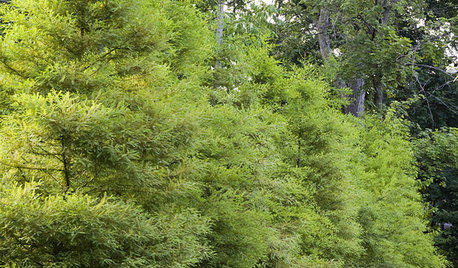Garden soil & lack of gardeners
kirts
16 years ago
Related Stories

FARM YOUR YARDHow to Get Good Soil for Your Edible Garden
The nutrients in your soil feed the plants that feed you. Here are tips on getting it right — just in time for planting season
Full Story
LANDSCAPE DESIGNFlood-Tolerant Native Trees for Soggy Soil
Swampy sites, floodplains, even standing water ... if you've got a soggy landscape, these trees are for you
Full Story
GARDENING GUIDES5 Prairie Wildflowers That Can Heal Your Soil
Get free, organic soil fertilizer with nitrogen-pumping plants that draw pollinators too
Full Story
GARDENING GUIDESGet the Dirt on Your Garden’s Soil
Understand how your soil supports your plants so you can ensure your garden’s success
Full Story
CONTAINER GARDENSContainer Gardening Basics: The Dirt on Soil
Learn the types of potting soil available and the best mixes to help your containers thrive
Full Story
GARDENING GUIDESGreat Design Plant: Try Blue Bells for Blooms in Dry Soil
This shrub’s violet-blue flowers and silvery foliage brighten low-water gardens all year long
Full Story
GARDENING AND LANDSCAPINGGreat Design Plant: Bald Cypress
Enjoy this beautiful tree's feathery foilage, fall color and tolerance of wet and dry soils
Full Story
GARDENING GUIDESGardening Solutions for Heavy Clay Soils
What’s a gardener to do with soil that’s easily compacted and has poor drainage? Find out here
Full Story
GARDENING GUIDESGardening Solutions for Dry, Sandy Soils
Has your desert or beachy site withered your gardening creativity? Try these ideas for a beautiful, easy-care landscape
Full Story
GARDENING GUIDESHave Acidic Soil in Your Yard? Learn to Love Gardening Anyway
Look to acid-loving plants, like conifers and rhododendrons, to help your low-pH garden thrive
Full StorySponsored



rjj1
Okiedawn OK Zone 7
Related Discussions
difference between garden soil and potting soil..
Q
Friday night gardening programmes- or lack thereof.
Q
Help! New to gardening and bought garden soil!
Q
Lack of bees in my gardens this summer.
Q
rjj1
Okiedawn OK Zone 7
sheri_nwok
Okiedawn OK Zone 7
Okiedawn OK Zone 7
rjj1
tmelrose
Okiedawn OK Zone 7
tmelrose
susanlynne48
sheri_nwok
sheri_nwok
susanlynne48
Okiedawn OK Zone 7
sheri_nwok
Okiedawn OK Zone 7
kirtsOriginal Author
sheri_nwok
Okiedawn OK Zone 7
kirtsOriginal Author
Okiedawn OK Zone 7
jk1550